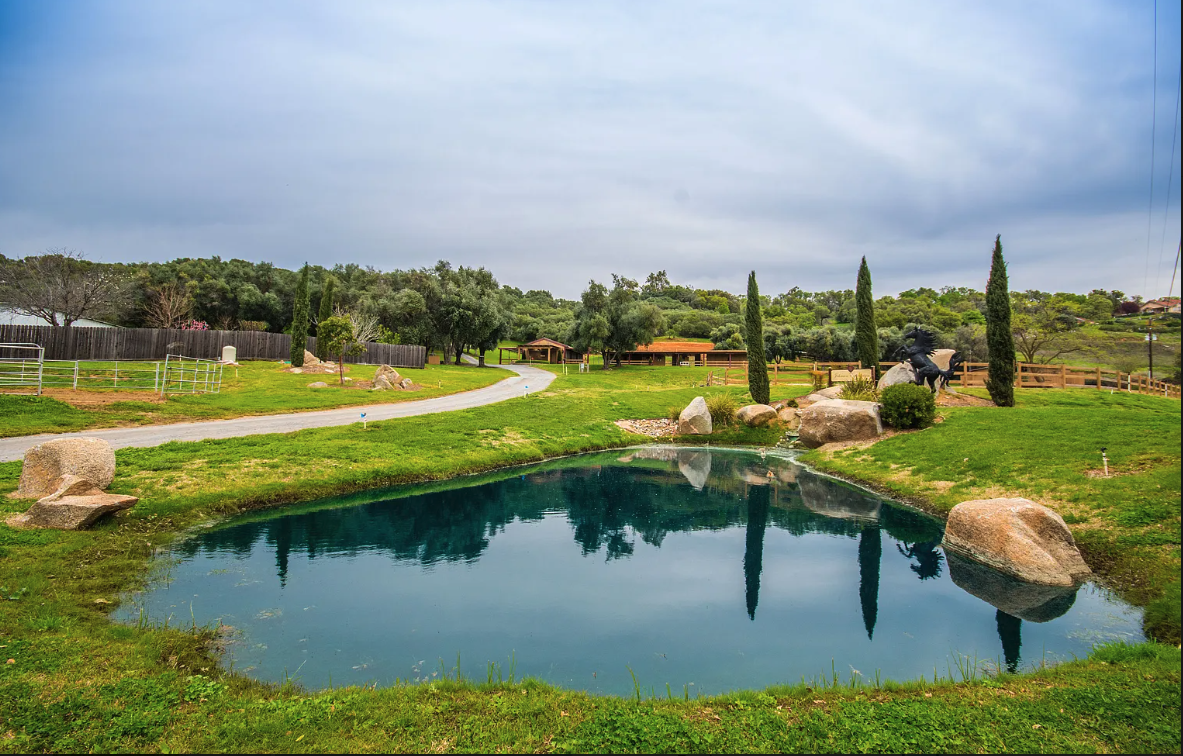
Equine Assisted Therapy
We offer individual and group sessions with horses and other livestock, providing a unique opportunity for personal growth and healing. Through hands-on activities such as horse husbandry, groundwork lessons, and sharing the personal stories of each animal, we create a safe and supportive space where individuals can process trauma, pain, or personal challenges at their own pace, guided by the calming presence of the animals.
Our commitment to professionalism and impactful equine-assisted services is backed by certifications in Eagala Equine Specialist, part of a global network of equine-assisted therapy experts, and Equine Assisted Learning (EAL). These credentials reflect our dedication to providing meaningful and transformative experiences.
Who can be a candidate:
Children of trauma
Adults of trauma
General and Social Anxiety Disorder
Depression / Postpartum
Bi-polar disorder
Substance Abuse
ADD/ADHD
Sensory disorders
Veterans
Autism
Personalized Pricing for Every Individual’s Journey
We honor the unique needs of each client by implementing a custom pricing model. Conducting an initial assessment is paramount for us to understand specific requirements, ensuring the highest degree of safety for both clients and our staff. This enables us to allocate adequate personnel to fully support each therapy session. Our aspiration is to create a safe environment while striving to create a splendid and memorable experience for everyone. By tailoring our prices, we ensure that our therapy remains accessible while adhering to safety and satisfaction standards.
Equine Assisted Psychotherapy
and Learning Services
Our Services
We offer Individual Equine Assisted Therapy Sessions as well as Family and Group Sessions. Our approach to Equine Assisted Therapy is exclusively ground-based, meaning there is no riding of the horses. This allows for horses to act naturally and make their own choices. Our groups may include several experiential practices in addition to equine assisted therapy such as yoga and CBT, to deepen your understanding of your own personal value system, core strengths and self-expression. Our group programs allow individuals to build connections and increase self-awareness. Groups are designed to help all participants to heal and grow together. Upcoming Groups: What Do You Stand For, Rise Above Trauma, Reconnected for Couples.
Our Location
All of our Equine Assisted Therapy groups are held at Rock N Riding Ranch in Newcastle. This serene location is situated on beautiful and private 5 acres to ensure safety and comfort of all participants. Rock N Riding Ranch is home to 15 horse, 3 dogs, a goat, a bunch of chickens and 5 cats. They are the heart of our ranch.
Our Team
Shea Marie Phinney, LMFT
Shea has provided psychotherapy for 24 years with an emphasis on First Responders/Post Traumatic Recovery. Shea is a skilled clinician in evidence based practices rooted in neuroscience and holds a strong belief that everyone can heal. Her love for horses started at a young age and she has felt their power of connection ever since. Shea is certified in Natural Lifemanship, Brainspotting, and Trauma Informed Yoga.
Lisa Brownie
Lisa brings over 30 years of horse experience to the arena. She brings her expertise and passionate heart to every interaction. Lisa truly understands the power in the relationship between horse and human for healing. Lisa is a certified equine specialist through Eagala. Lisa holds her Bachelor's Degree in Criminology and Psychology.
In partnership with the horses, Shea and Lisa create a safe environment that allows for true healing to occur. Shea and Lisa are First Responder Culturally Competent and understand the day to day trauma experienced by those in service. They believe that relationship with others is the vehicle for change. It is in harmony with another, one begins to understand themselves.
Contact Shea Phinney at
916-235-0889 or Sheaphinneylmft@gmail.com
Equine Assisted Growth and Learning Association: Equine Specialist
The Eagala organization (Equine Assisted Growth and Learning Association) spans a global network of highly professional and passionate individuals incorporating horses into treatment. Every certified Eagala practitioner is a credentialed Mental Health Professional or Equine Specialist, passing through standardized fundamentals training, assessment, and then certification.
-
Eagala sets standards, provides support, and educates professionals who are changing lives with Eagala Model services. Eagala is working to ensure that every person around the world has access to Eagala Model services.
Eagala is more than just an organization, it’s even more than a global network, therapeutic practice, or a set of professional and ethical standards. Eagala is a way of being a philosophy of holding space, believing in clients and horses, avoiding judgment and unnecessary interpretation, embracing confidentiality, and mastering a set of skills that can apply to many areas of life.
-
Minimum Standards for Equine Specialists
Must have 6,000 hours (equals approx 3 years full-time work) hands-on experience with horses
Must have completed a minimum of 100 hours of continuing education in the equine profession. 40 of those hours must have been completed in the last 2 years
Education need to include topics such as:
Ground work experience
Horse psychology knowledge
Reading horse body language / nonverbal communication
EQUINE ASSISTED LEARNING
Equine-Assisted Learning (EAL) certification empowers professionals to facilitate impactful learning experiences involving horses. Through EAL, individuals can enhance essential skills such as communication, teamwork, and leadership in a unique and meaningful way. We’re proud to support this transformative approach to personal and professional development.
-
Our mission is to inspire and nurture the development of experiential facilitation skills for learning programs with horses. Skills that are based on the wisdom of our horse partners through the horse-human connection and utilizing a coaching style of facilitation. We provide tools and training to facilitate EAL programs for business training, leadership development, team building, coaching, personal growth, wellbeing, mindfulness, meditation, and youth programs.
-
Horses and domesticated animals have been used as medical treatment since the second century. The trajectory of therapeutic uses for animals and horses in medicine is essential in understanding the concept of equine‐assisted therapy. Currently, there are 26 medical uses of horses.
Horses have a rich aesthetic influence on humans who interact with them, creating visual imagery of power and beauty. The physical qualities of tri‐rotational movement, warmth and gait differ from those of mechanical horses. Empirical referents measure communications of pleasure, smiles, improved gait and improved functioning. Antecedents include the presence of a horse, a human who is capable of interaction with the horse without illness or injury, a facilitator for direction and interpretation, and a goal of a positive health outcome. Consequences include improved mobility, decreased spasticity, improved psychological presence and improved self‐esteem, resulting in improved quality of life. New research into the effects of horses as a healing intervention needs to be conducted to expand the knowledge about this concept and its uses. The nurse is positioned perfectly to treat more than a specific disability by viewing the patient as a whole. This newly researched intervention has promise in assisting the nurse to provide physical and psychological positive outcomes.
-
White-Lewis, Sharon. “Equine-assisted therapies using horses as healers: A concept analysis.” Nursing open vol. 7,1 58-67. 27 Sep. 2019, doi:10.1002/nop2.377
https://www.ncbi.nlm.nih.gov/pmc/articles/PMC6917924/
Published online 2019 Sep 27 by the National Health Institute
Equine‐assisted therapies using horses as healers: A concept analysis
Alta California Regional Center: Exclusively for Self-Determination Clients Only
We are proud to partner with the Alta California Regional Center to provide equine services tailored to their non-profit mission. These services are now accessible to Self-Determination clients only. Reach out to us today to learn more about how we can support you.
-
Alta California Regional Center (ACRC) is a private, non-profit corporation working under contract with the State of California, Department of Developmental Services, to provide services to persons, age three and above, with a developmental disability pursuant to the Lanterman Act.
ACRC also provides services to infants and toddlers, between birth and 36 months, who have a need for early intervention services and who meet the eligibility criteria for the California Early Start program.
-
The term “Developmental Disabilities” applies to a whole group of conditions that may cause physical, learning, language, or behavioral impairment. According to the CDC, about one in six children in the United States have “one or more developmental disabilities or other developmental delays.” These conditions begin before the age of 18, have an impact on daily life, and generally last throughout a person’s life.
Alta California Regional Center assists individuals with specific developmental disabilities and their families in accessing appropriate services so that every individual can live up to their highest potential.
Intellectual Disability
The name of the condition we know today as Intellectual Disability has changed over time; most recently it was primarily known as mental retardation. Although the name has changed, the essential elements of the diagnosis (limitations in intellectual functioning, behavior limitations in adapting to environmental demands, and early age onset) have not substantially changed.
Cerebral Palsy
Cerebral palsy (CP) is a non-progressive pathologic lesion in the developing infant or child’s brain causing permanent motor and/or sensory impairment. (American Academy of Pediatrics)
Epilepsy
Epilepsy, sometimes called a seizure disorder, refers to a disorder which causes recurring seizures.
Autism
Autism Spectrum Disorder (ASD) or Autism is a brain-based disorder that affects a person’s social interaction, communication and causes other behavioral patterns that interfere with daily functioning.







